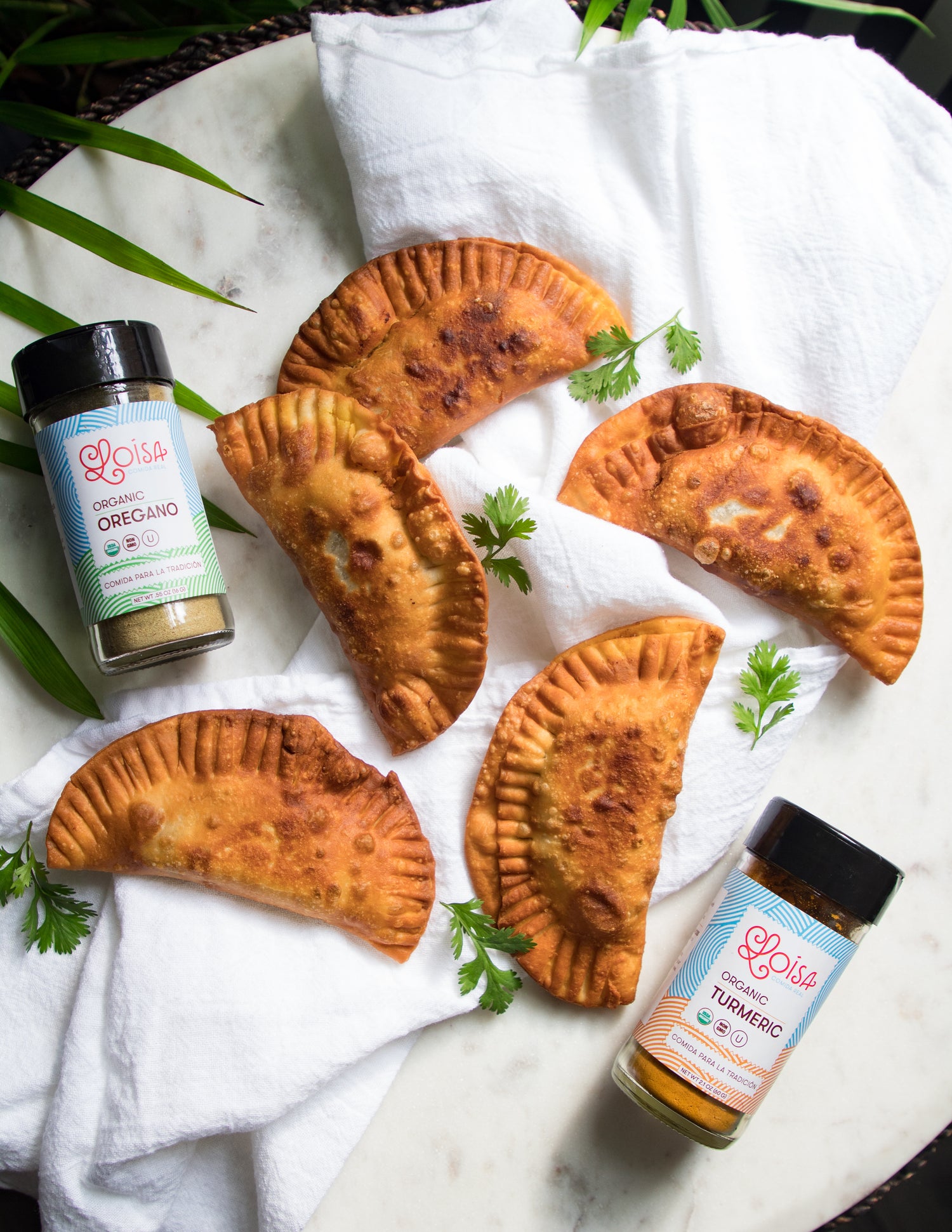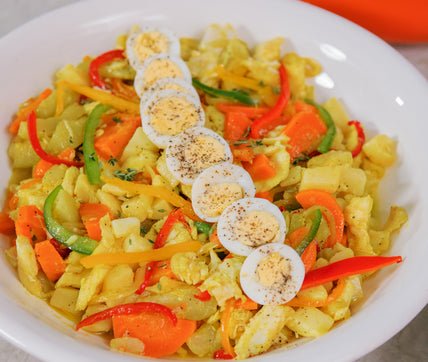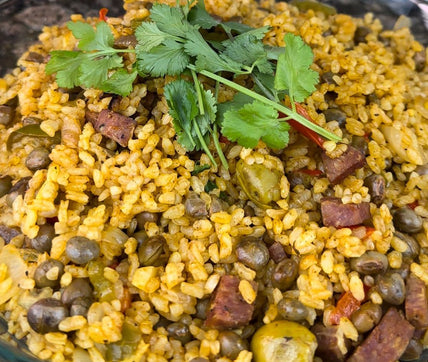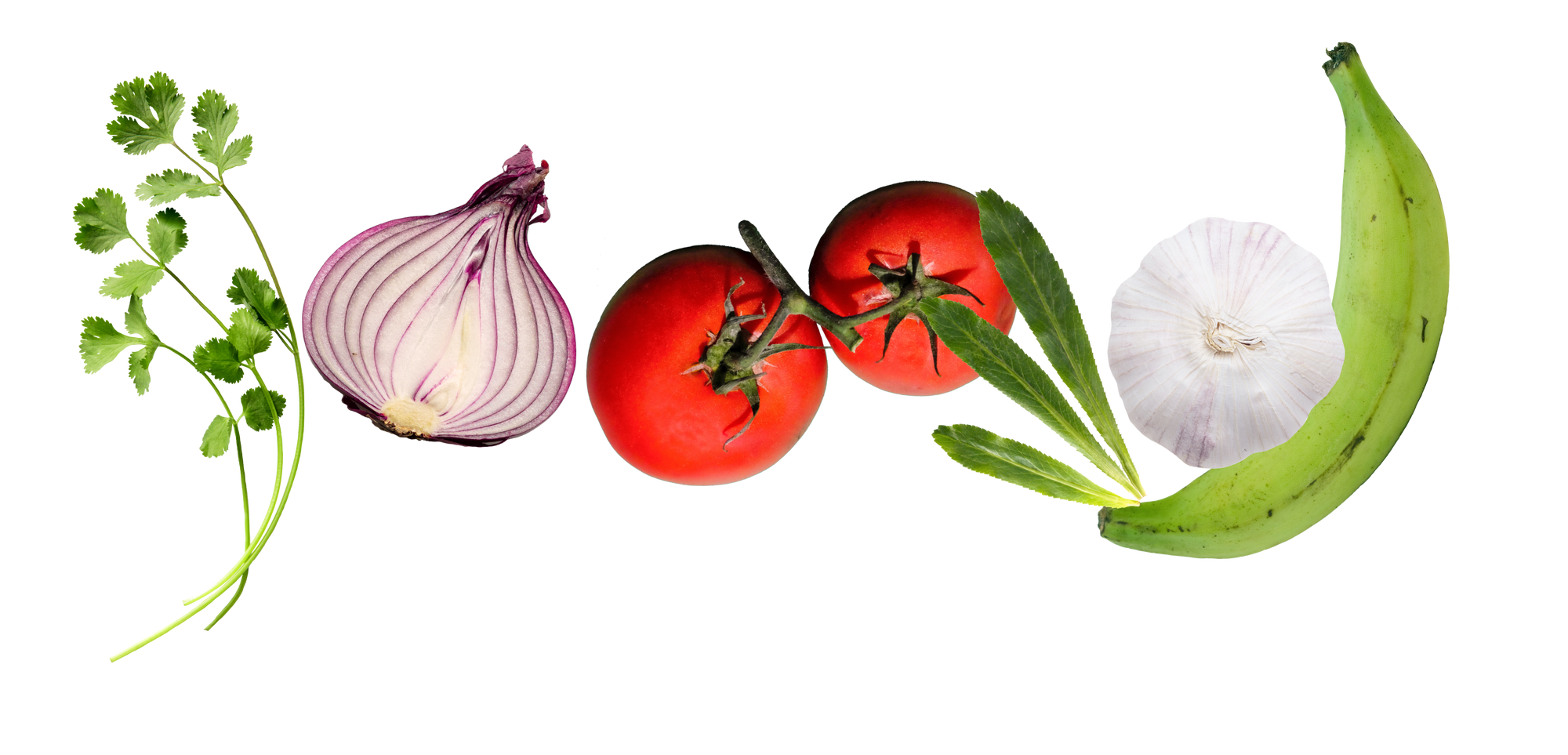
Nuestra Latinidad: An Empanada Tour of Latin America
Empanada means "wrapped in bread" and with those few words the whole world gets hungry! Here, let's explore how these pockets of flavor compare across Latin America.
by Cybele Ramirez
At Loisa, we’re always paying homage to our heritage, celebrating the culture and history of Latin flavor and tradition. For Latinx Heritage Month, we’re kicking off a new series, “Nuestra Latinidad,” celebrating our differences and at the same time, the power of our togetherness.
Over the month, we’ll be taking a closer look at Latinx/Latine/Latino/Latina and the terms that define us, exploring our Black and Indigenous roots, and taking a tour of some of the most popular dishes that unite us. We invite you to disfrutar la herencia with us over the next four weeks, from September 15 through October 15!
An Empanada Tour of Latin America
The word empanada literally means “wrapped in bread.” So, naturally, there’s no wrong way to do it. The combinations of starchy shells and sweet or savory fillings, whether baked or fried, are infinite.
Empanadas and empanada-adjacent foods are staples in cultures around the world. In Latin America and the United States, empanadas are generally known to be snack-sized, hand-held meat pies. But this style of making delicious stuffing and encasing it in some sort of dough can be found in Italy’s ravioli and calzones, South Asian samosas, East Asian wontons and dumplings, Poland’s pierogies, Russia’s pelmenis, and so many other iterations.
Despite the prevalence of this style of food, colonial history tells us that empanadas found their way to Latin America through Spanish colonization. Over time, the people of Latin America adopted the empanada and made it the versatile food that we know it as today.
We could spend countless hours following empanada preparation methods across Latin America. There are many! Each of which is specific to a region, its people, and its agriculture.
Let’s learn more about some of the mainstays...
Maiz en el Norte
In the northern region of South America, including Colombia and Venezuela, delicious fillings are wrapped in corn flour and deep-fried. The corn flour used for empanadas in this region is different from the corn tortillas you might be thinking of. It’s more like the pre-cooked, finely ground masa commonly used for making arepas.
Colombian empanadas are most known for being filled with picadillo, or a mix of ground meat, onions, and potatoes. But if you’ve been to Colombia or a Colombian empanadas spot in your city, you know the varieties of empanada stuffing are deliciously abundant.
In Venezuela, however, you’re likely to bite into molten cheese from local farms or freshly chopped seafood–including baby shark (empanadas de cazón) and clams (empanadas de pepitonas). The ultimate Venezuelan empanada is a handheld version of the iconic pabellón–a dish of rice, shredded beef stew, black beans, and plantains.
The corn-based, deep-fried empanadas of the northern region usually come with something that empanadas of other regions don’t: sauce. The dynamic duo of Colombia is a sizzling hot crispy beef empanada served with ají, an onion, and tomato sauce with a little lime. In Venezuela, you'll find an herb and avocado sauce called guasacaca, a milk-based hot sauce called Picante de Leche, and Picante katara, a sauce made from Bachaco ants, yuca water, and onions.
Empanadas del Caribe
Yuca empanadas, or Catibias, are packed savory snacks from the Dominican Republic. The starchiness makes for the perfect crisp outer layer of otherwise buttery-soft yuca. You can find these empanadas stuffed with almost anything across the island but simple sofrito-made ground beef is the catibia of the DR.
In Puerto Rico, you may find yourself deciding between empanadillas and pastelillos. Unlike catibias in the Dominican Republic, both use wheat flour for encasing the traditional ground beef, onion, tomato filling. Empanadillas are larger, more filling, and made with thick pie-like dough with rolled edges. Pastelillos (aka pastelitos) are a thinner, flakier, snack-sized variety with crimped or folded edges.
Platanos en El Salvador, Nicaragua, Costa Rica, y Ecuador
Plantains, from maduro to verde, have a variety of uses. In their greener stages, they offer a neutral-flavored starchiness perfect for just about any accompaniment. In their sweetest form, yellow and black plantains give a sweet and savory shell to dessert-like empanadas.
Empanadas de platano are popular in El Salvador, where the maduros (sweet plantains) are used as dough and stuffed with beans and sweet milk. Once fried, they’re coated in sugar.
On Ecuador’s coast, empanada dough is made from green plantains and stuffing varies from cheese, ground meat, and seafood. However, the empanada most often associated with Ecuador is la empanada de viento. This translates to “the airy empanada”–and that it is! These empanadas use thin wheat flour dough to engulf rich cheeses, are deep-fried, and sprinkled with sugar. Much like puff pastries, they’re not really considered a dessert, and more often than not, they’re served with morning coffee.
Antojitos en Mexico
Antojitos, or “little snacks,” are popular street foods throughout Mexico. Think, elote, enchilada, and yes, you guessed it, empanadas. Like in Colombia and Venezuela, corn is commonly used to make empanada shells in Mexico. But, pachuqueños are unique to the region of Hidalgo. They’re beef-filled pockets made with wheat flour, not corn. Like Ecuadorian empanadas de viento and Brazilian pastéis, Mexican pachuqueños are known for being thin-crusted, light, airy, and crisped to perfection.
Salteñas en Bolivia
Broth-filled empanadas are the Bolivian breakfast of dreams. Salteñas are filled with meat, eggs, peas, potatoes, and stew. Unlike the empanadas we’ve toured so far, these are baked to perfection. To consume, hold them upright, take small bites from the sealed edge, and sip the stew as you go!
Queijo en Brazil
Pastéis are (usually cheese) filled pockets of goodness found on the streets of Brazil. They come in square or half-moon shapes with an extra-crisp, pastry-like thin crust. While cheese is the most common patéis in Brazil, beef, prawn, and vegetable fillings are enjoyed, too.
Las Empanadas del Cono Sur
Empanadas in the southernmost region of South America, including Argentina and Chile, are almost always baked, made of wheat dough, and use mostly fats, potatoes, and beef for stuffing.
In Chile, empanadas de pino, or beef and onion, are also popular but seafood empanadas are abundant. Camaron y queso, or shrimp and cheese empanadas are a Chilean favorite. Argentina is known for its high quality, savory meats and strong Spanish influence. The most common Argentine empanada is stuffed with beef, onion, potato, egg, paprika, and cumin before it’s baked.
In the southern cone of Latin America, empanadas are reminiscent of the pie-like dish the Spanish charted over–from dough to preparation, to filling. But as we move around Latin America, we’re reminded that countries–each with their own histories, foods, and cultures–have established traditions in these snack-sized treats, making them truly their own.
As we move throughout Latin America, we're reminded that our differences, including how we prepare and fill empanadas, also unite us in incredibly flavorful ways.
Other Stories You Might Like



